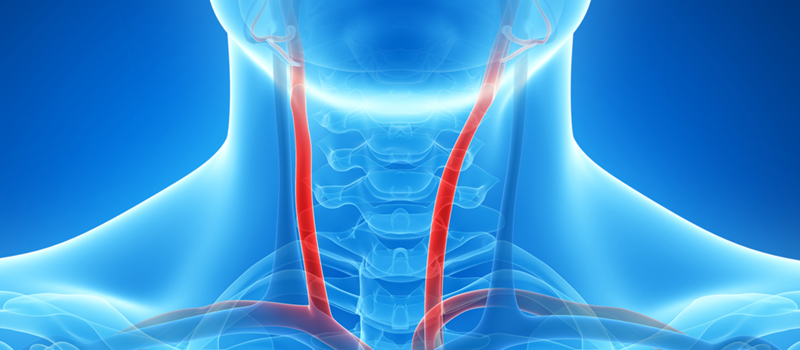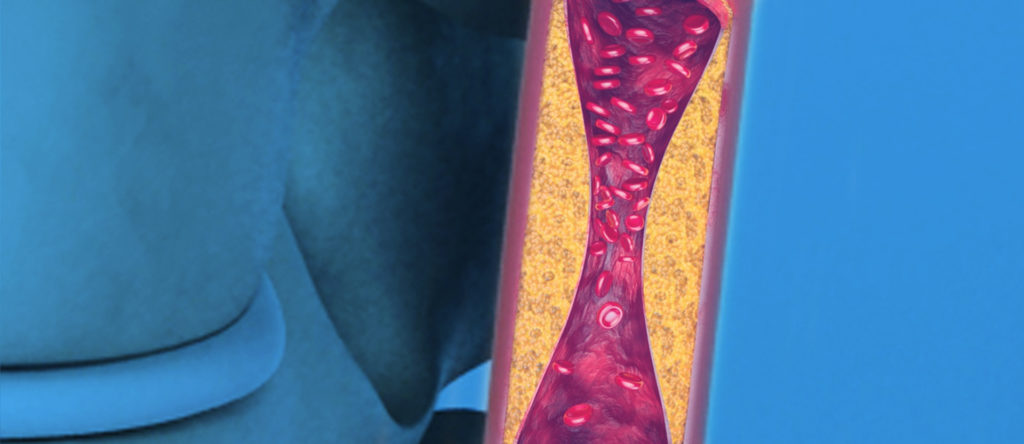What is carotid artery disease
Carotid artery disease happens when fatty deposits fill the blood vessels that carry blood to the head and the brain. As a result of the blockage, the blood flow to the brain is interrupted, increasing the risk of a stroke. A stroke cuts off the oxygen supply to the brain, and the brain cells start dying in a couple of minutes.
Stroke is one of the leading causes of death and permanent disability in the US. It is vital that one at risk of carotid artery disease gets regular medical evaluation to prevent fatal consequences.
Causes
The main cause of carotid artery disease is atherosclerosis. Plaque deposits in the blood vessels getting blood to the head and brain cause these vessels to stiffen and narrow, restricting blood flow. Plaques include fibrous tissue, calcium, cellular debris, and clumps of cholesterol. The clogging of the arteries deprives the brain of crucial nutrients like oxygen, affecting the optimum functioning of brain structures.

Risk factors
Certain factors increase the risk of one developing carotid artery disease. These include;
- Age: As you age, your arteries become less flexible and more prone to injury, making plaque development easier.
- Use of tobacco: Nicotine scars the arteries’ walls, and smoking increases blood pressure and heart rate.
- Obesity: Obesity increases your risk for atherosclerosis, diabetes, and high blood pressure.
- Sleep apnea: If you have sleep apnea, you have a high risk of stroke since you momentarily stop breathing at night.
- A sedentary lifestyle: Lack of sufficient exercise contributes to the development of conditions that may damage your arteries, like obesity, high blood pressure, and diabetes.
- High blood-fat levels: If your blood has high levels of triglycerides and low-density lipoprotein cholesterol, it encourages the formation of plaques.
- Family history: If your family has a history of related diseases like coronary heart disease, or atherosclerosis, you are at a high risk of developing carotid artery disease.
- Diabetes: Diabetes affects your ability to process fats efficiently, increasing your risk of atherosclerosis and hypertension.
Symptoms
So how can one know they have carotid artery disease? Unfortunately, the condition does not have signs and symptoms in its early stages. As such, you may not know you have the condition until it progresses to a point where you experience a stroke or a transient ischemic attack (TIA). You may know you have a TIA or stroke through the following symptoms.
- Sudden problem speaking and understanding what is being said
- Sudden and acute headache with no clear cause
- Sudden loss of balance or dizziness
- Sudden weakness or numbness in the face or limbs, often affecting only one side of your body.
- Sudden eyesight problems in one or both of your eyes.

When to see a doctor
Should you experience any of the above symptoms, even if they are only for a short time, you should seek a specialist immediately. You would likely have experienced a TIA, which is a sign that you are at risk of having a full-blown stroke attack.
If you also have any of the above risk factors, you should regularly visit specialists so that besides evaluating you for any carotid artery disease, you can get the best management practices that lower your risk for developing the disease and stroke. Fortunately, you do not have to go far for expert treatment.
Vascular Washington Specialists now bring quality diagnosis and treatment services near you. Even booking appointments is seamless; you can do it from your phone. Contact us today and let us help you.



